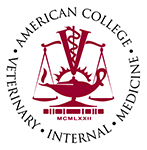HELPFUL ARTICLES
CORNEAL ULCERATION
Dr. Stephen Angelos, DVM, DACVIM

One of the most common eye problems that veterinarians treat in horses and other large animals is ulceration of the cornea. The cornea is the clear part of the eye that light passes through on its way to the back of the eye where the image is converted to a signal that goes to the brain for processing. There are many problems that can develop in the cornea, but here we will just focus on ulcers. The cornea is made up of several different layers. All of the layers function together to help maintain a normal, healthy eye. In addition to being critical to letting
light pass into the eye, the cornea also functions to protect the deeper structures of the eye. To do this, the eye has many nerve endings that let the it know when something bad has happened. The body tells us when the eye has been injured in several ways: tearing, swelling of the eyelids, cloudiness in the cornea, and squinting are the most common external signs of a problem. These signs SHOULD ALWAYS be taken very seriously if they are observed by an owner.

There are many causes of corneal damage. Trauma from foreign material (hay, hair, burdock or branches) is just one of the common ones. Sometimes, the eye can be inflamed from another problem that causes the animal to rub its eye, and then the outer layer of the cornea gets damaged secondarily from rubbing. When the outer layer of the cornea is damaged, we call it an ulcer. To make the diagnosis that an ulcer has occurred, an examination is performed and the cornea is stained with a special dye called fluorescein. Fluorescein is a bright florescent stain that only adheres to the inner layer of the cornea. When stain is applied to the cornea, we can then see where the outer layer of the cornea has been damaged. This is a picture of a corneal ulcer that has been stained with fluorescein: the bright green area is the ulcer.
If an ulcer is found, treatments will be started to speed healing as well as reduce discomfort to the patient. Antibiotics or drops are typically started to prevent infection of the cornea while the outer corneal layer grows over the ulcer. If your veterinarian finds that the ulcers already infected with bacteria or fungae, the eye will require aggressive and intensive therapy.
To prevent ulcer in horses, it is helpful to trim low hanging branches and remove burdock from the pastures. In the fall, pay special attention to burdock in forelocks and remove them as soon as possible. Whatever the cause, it is always very important to call your veterinarian right away if you suspect a problem has developed in an animal’s eye. Getting the problem diagnosed quickly and starting treatments early can make the difference between a quick recovery and loss or impairment of vision.




